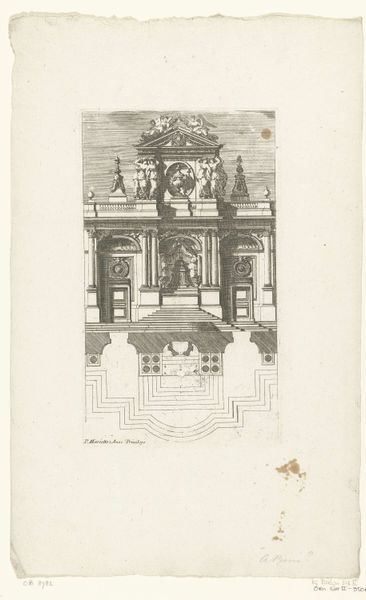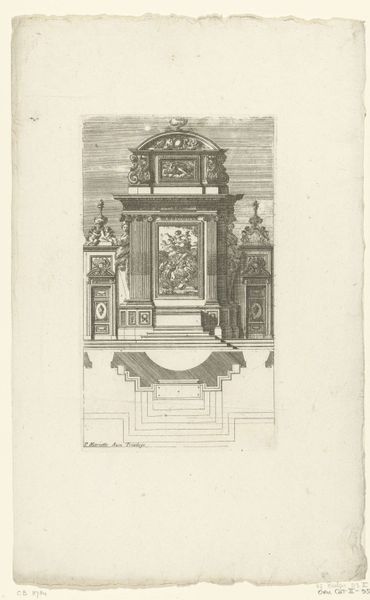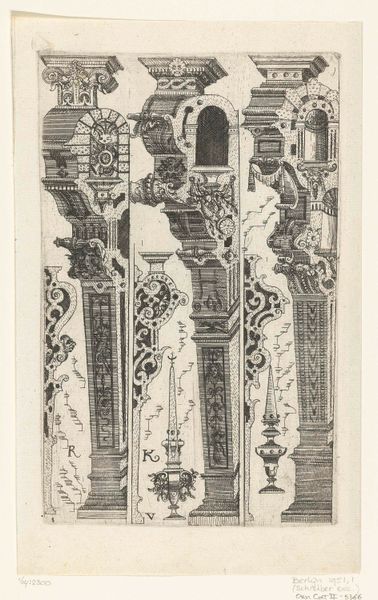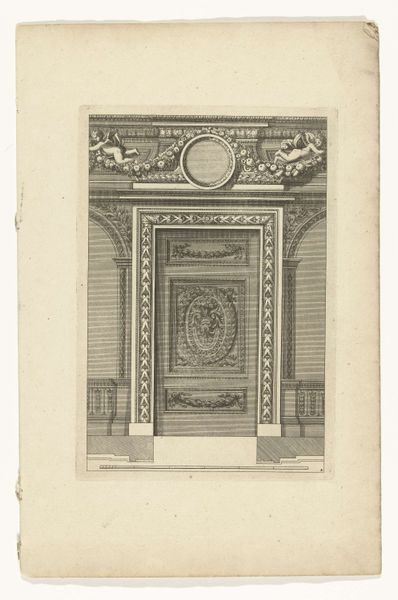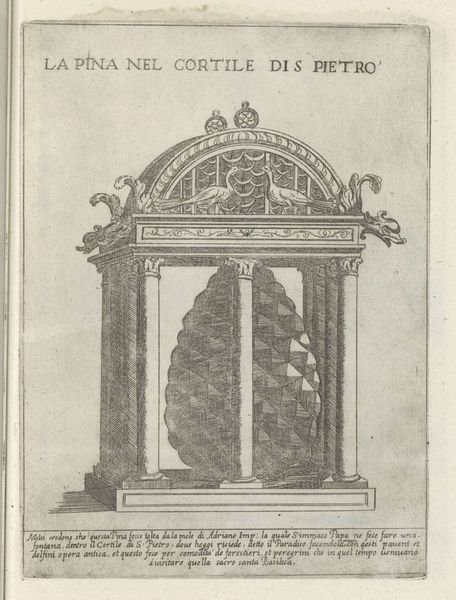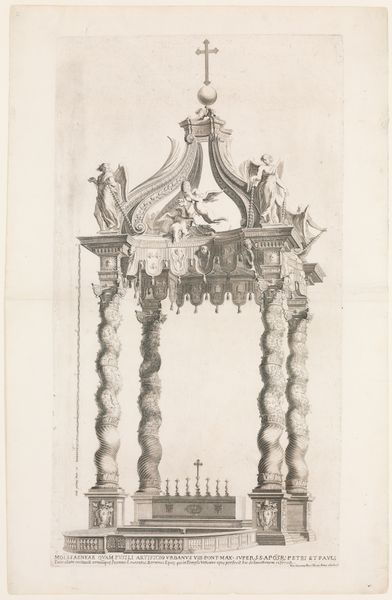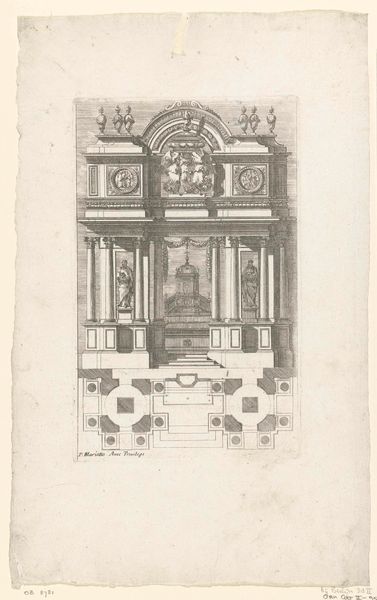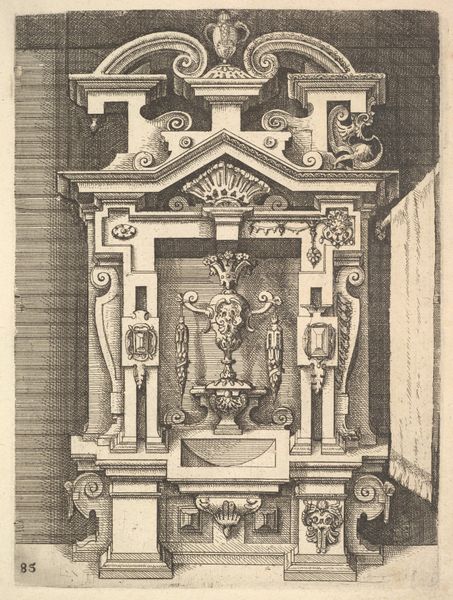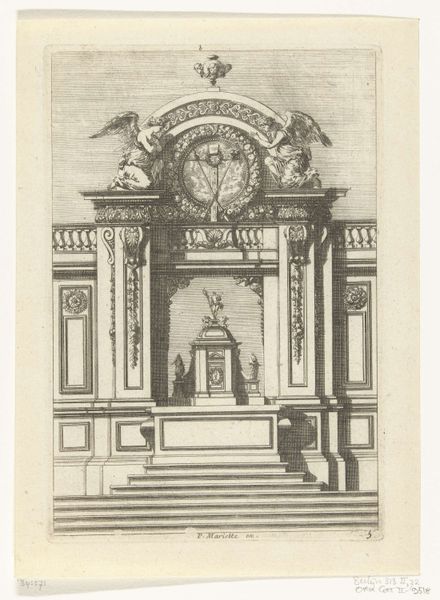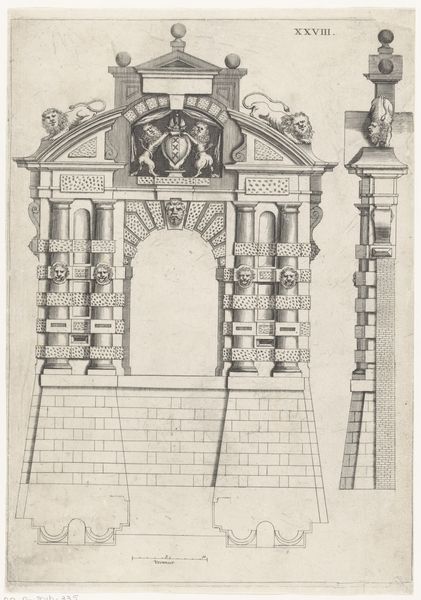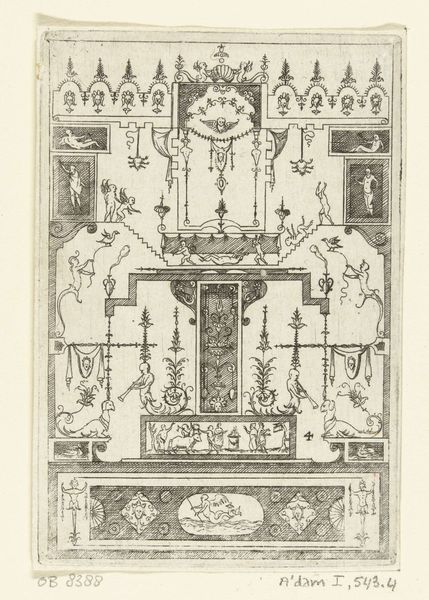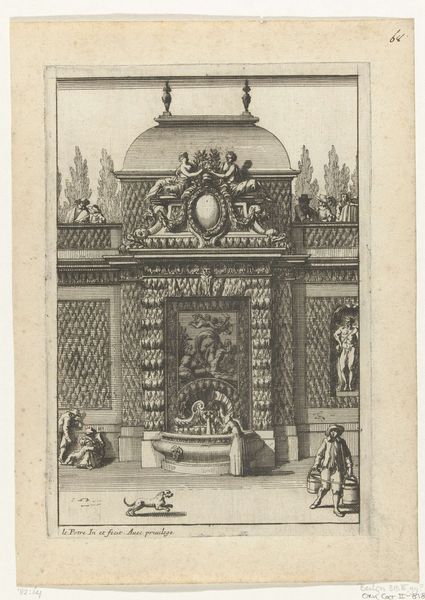
print, engraving, architecture
#
aged paper
#
baroque
# print
#
old engraving style
#
line
#
history-painting
#
engraving
#
architecture
Dimensions: height 215 mm, width 133 mm
Copyright: Rijks Museum: Open Domain
Curator: What strikes you first about this print, “Altaar onder baldakijn”, attributed to Jean Lepautre, dating back to before 1716? Editor: The sheer austerity, even in its baroque detailing. The aged paper adds to this solemn gravity. It reminds me that faith and power were profoundly intertwined. Curator: Precisely. Look at the composition. Lepautre employs line engraving to articulate this vision of an altar under a canopy. We see cherubs, twisted columns—the whole nine yards, symbolic elements designed to elevate the status and religious meanings of the space. It reflects a hierarchical worldview, wouldn't you agree? Editor: Without a doubt. This image speaks to the social role that spaces such as these held: stages for reinforcing political dominance, really. How can we separate faith from the agendas it advanced in the pre-Enlightenment? The figure ascending the stairs appears overwhelmed by the scale of it all. Curator: The symbolic implications of such a design go beyond sheer physical domination. We see, rendered through careful line work, a conscious attempt to reach the divine. That small, almost lost figure on the steps does look to be struggling physically within this symbolically significant ascension. Do you notice the strategic usage of ornament and architectural elements pointing the viewer upward, quite like one feels the need to look upward inside the building, so does the artwork instill the same response in the viewer of this print? Editor: That's an important aspect: the artwork invites you into it as an active participant and the scale and the linear perspective further intensify that feeling. Also, the altar is visually separated by the staircase from the mundane. Who has access to these places of power and devotion, and, equally vital, who is consciously barred from them? Curator: Absolutely, this print reflects baroque sensibilities but filters them through what seems to be an architectural sketch—revealing the cultural continuity in design across media. Editor: This piece brings into focus a potent intersection—one where spiritual, political, and artistic power converge, something worth considering when encountering artwork such as this. Curator: Yes, a lot to unpack. These older artworks show, among other things, us the timeless, almost unchanging ways through which humanity builds a sacred space that simultaneously exalts and silences.
Comments
No comments
Be the first to comment and join the conversation on the ultimate creative platform.
